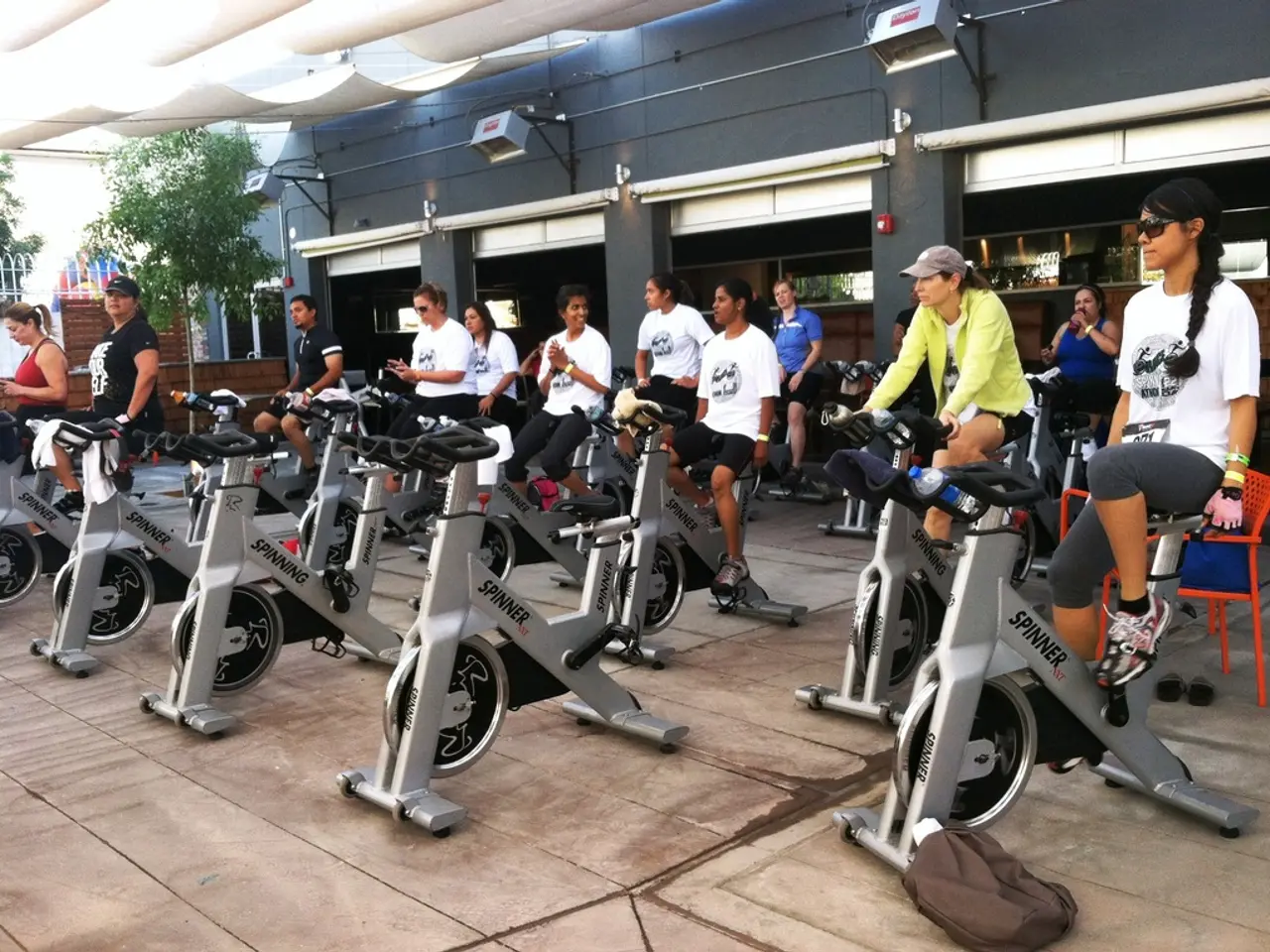Mastering Resistance Bands for Novices: A Comprehensive Guide
Resistance bands have gained popularity as a versatile fitness tool for beginners and seasoned athletes alike. Their simplicity, affordability, and versatility make them an excellent choice for individuals looking to build strength, improve flexibility, recover from injuries, and maintain fitness with minimal equipment and space.
### Choosing the Right Bands
For beginners, it's advisable to start with X-Light to Light resistance bands. These bands provide a gentle introduction to the constant tension provided by resistance bands, allowing your body to adapt gradually. Loop bands are ideal for leg and glute exercises, while tube bands with handles are perfect for upper body exercises.
### Warm-Up Routine
A dynamic warm-up is crucial to prepare your muscles and joints for the workout ahead. Exercises like the Low Lunge Arch, Quad Stretch with Reach, Arm Swings, Jumping Jacks, or Butt Kick + Reach help prepare your body for the exercises to follow.
### Key Exercises
Squats, seated rows, standing chest press, lateral raises, glute bridges, bicep curls, and tricep extensions are some of the key exercises that can be performed using resistance bands. These exercises target various muscle groups, ensuring a comprehensive full-body workout.
### Workout Structure
Circuit training, where a series of exercises are performed with minimal rest, is an effective way to improve muscle endurance and burn fat. Aim for three sessions per week, each lasting 20-30 minutes.
### Adjusting Resistance
As you progress, increase the resistance level. Switch between light, medium, and heavy bands based on the exercise and your fitness level.
### Cool Down
Finish your workout with static stretches to prevent muscle soreness. Exercises like the Bent Arm Wall Chest Stretch, Standing Quad Stretch, and Toe Touch to Scarecrow are ideal for a cool-down routine.
Resistance bands offer numerous benefits, including portability, versatility, cost-effectiveness, safety, and adaptable resistance. They are widely used in disciplines like Pilates and yoga for enhancing poses and improving alignment. Whether you're a complete novice to exercise, someone looking to stay fit during travel, a new mother easing back into fitness, or an older adult seeking joint-friendly strength training options, resistance bands can meet your needs without intimidating complexity or high cost.
Over time, you can increase the challenge by switching to a thicker band, adding more reps or sets, combining bands for extra resistance, or integrating them into more complex movements. With dedication and proper technique, resistance bands can transform your body and health.
- Resistance bands are beneficial for individuals seeking strength, flexibility, injury recovery, and maintenance of fitness with minimal equipment and space.
- For beginners, X-Light to Light resistance bands are recommended as they offer a gradual introduction to the constant tension provided by resistance bands.
- Loop resistance bands are suitable for leg and glute exercises, while tube bands with handles are ideal for upper body exercises.
- A dynamic warm-up is essential before starting a workout to prepare muscles and joints, with exercises like Low Lunge Arch, Quad Stretch with Reach, Arm Swings, Jumping Jacks, or Butt Kick + Reach being effective.
- Key exercises that can be performed using resistance bands include squats, seated rows, standing chest press, lateral raises, glute bridges, bicep curls, tricep extensions, targeting various muscle groups.
- Circuit training, where a series of exercises are performed with minimal rest, can improve muscle endurance and burn fat, aim for three sessions per week, each lasting 20-30 minutes.
- As you progress, increase the resistance level by switching between light, medium, and heavy bands based on the exercise and your fitness level.
- Cool down after workouts with static stretches to prevent muscle soreness, exercises like Bent Arm Wall Chest Stretch, Standing Quad Stretch, and Toe Touch to Scarecrow can be helpful.
- Resistance bands provide benefits such as portability, versatility, cost-effectiveness, safety, and adaptable resistance, and are widely used in disciplines like Pilates and yoga.
- Over time, you can increase the challenge with a thicker band, more reps or sets, combining bands for extra resistance, or integrating them into more complex movements.
- With dedication and proper technique, resistance bands can transform your body, health, and be a part of your health-and-wellness and fitness-and-exercise routines.




